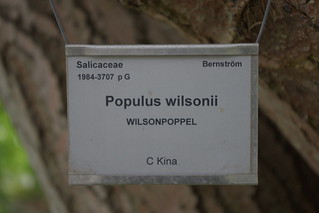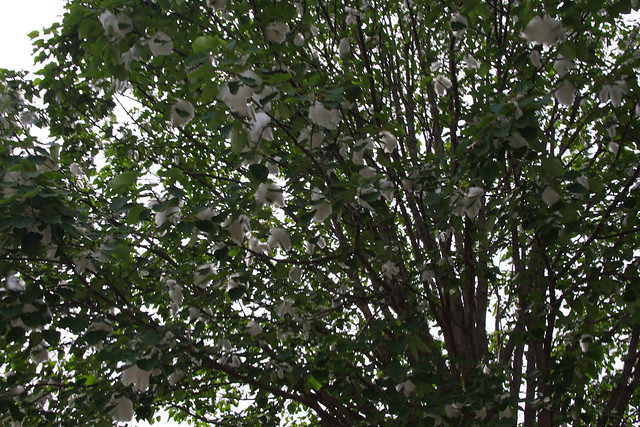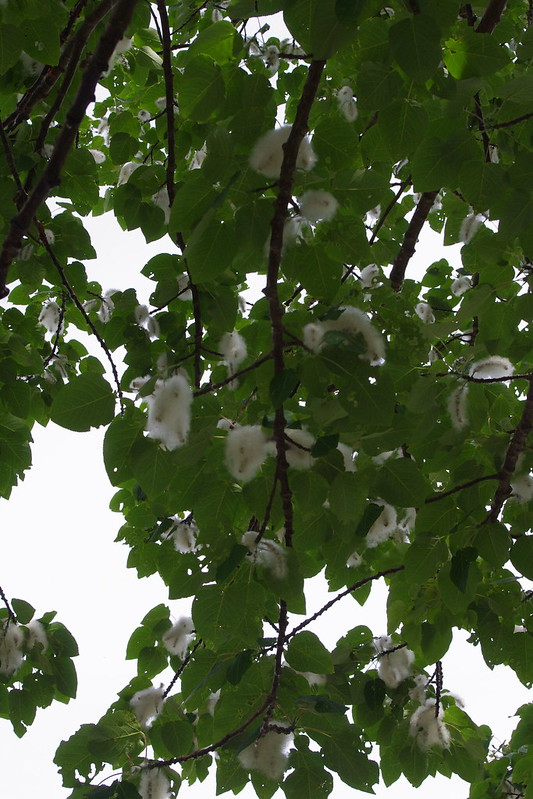 |
| Photo: Mine Göteborg Botanical Gardens Spring 2013 |
This was enough to make anyone do a double take. This stuff was everywhere. It was undeniable what this tree was and reminds me of something I've never forgotten when it comes to plant identity, although while the origin of this saying did have to do with plants, it was used illustratively in identifying the type of person we run across in life.
"By their fruits you will recognize them" Matthew 7:16Believe it or not, when I'm stumped out in the field and having a difficult time identifying plant which looks familiar, but has familiar shapes or patterns to something else, I actually look for fruits, nuts or other seeds. So the old saying of "by their fruits you will know them" holds an element of field working merit. While there are many type of plants, within the same group there will always be similar characteristics or identifying marks and patterns in the fruit they produce. Of course there are always exceptions, but still it makes things a fun challenge.
 |
| Photo: Mine |
Here is a view from underneath the Cottonwood's canopy looking up towards the sky. These large cotton balls are so unmistakable and hard to miss. Wonder why I never paid any mind before ? Oh yeah that's right, I was always there in the middle of deep summer.
Here is a much closer zoomed in shot to give you an idea of the size of these cotton balls. The leaves also are far more bigger than what most folks are use to seeing over in the States with the Native Fremont Cottonwood (Populus fremontii). The size of the cotton balls in this tree were huge and in some cases bigger than any actual cotton boll I've ever encountered in a Texas Farmer's field when I stopped along the roadside for the first time in my life encountering them. It was incredible stand under this tree and gazing up at some so unbelievable. And to think, if I had come at another moment as times past, I would have missed all of things and never paid the tree any mind as I had in the past. Funny, I never once when passing this tree ever glimpsed at the identification sign below it to find out what it was. I'll always pay close attention now and be sire to come back at the right time of year. *smile*
 |
| Photo: Mine |
And finally to give a better sense of scale for this trees leaves and the size of those large cotton balls, here is my hand lowering down a branch a bit for a closer shot. Looking at the size of these things, I wondered if anyone historically attempted to utilize these cotton bolls the same way we use the conventional cotton plant.
 |
| Photo: Mine |


Timeless, 35 years ago my husband brought home a small cottonwood tree that he bought up near Victorville. We planted it in our back yard. It is now HUGE! Our neighbors to the east HATE IT because the leaves blow into their yard and pool. So, what do they do? They have their gardener collect all the leaves and he throws them back into our yard! A couple of years ago hubby had some guy over to cut off a branch that was over the house (none of the rest of the tree is...) and when it fell, it went WHAP! on the ground. The aforementioned neighbor screamed at my husband, "VHAT are you doing? You did NOT ask me if you could do dat!" Apparently the TWAP jarred him out of his beauty sleep...BUT, this tree is the home for an oriole family for YEARS and once in a while an owl stops by. I love to listen to the leaves stir on a breezy day and I also (hehehe!) LOVE knowing that it irks the hell out of our neighbors! But, that's just me...
ReplyDelete~~Cheryl Ann~~
Yeah at my old place in Anza on the west side of the house overlooking Anza Valley, every afternoon sounded like a rain shower outside. It was beautiful and kept the house cooler. Unfortunately that Cottonless Cottonwood is now long gone. Simply died slowly as a result of it's water requirements for it's much more massive bulk not being met.
Delete